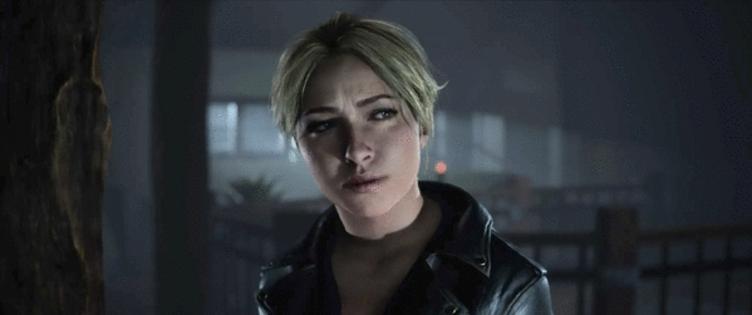'Until Dawn' review: This lackluster remake will make you scream
Published in Science & Technology News
"Until Dawn" is an all-time favorite of mine. The mix of cheesy teen horror, intense life-or-death sequences and generally impressive graphics, all bound by a bloody will-they-or-won’t-they-survive branching story in which your choices actually matter, just delights my inner scream king. The 2015 PlayStation 4 exclusive was a prime example of how a game could be a cinematic experience, and it elevated the interactive drama genre to a new level.
So when a remake of the survival horror game was announced, with a focus on improved graphics, my initial response was gleeful: another reason to play "Until Dawn"? I’m in. But as I thought about it more, another feeling started to bubble up: confusion. Did we really need a remake of a 9-year-old game that still holds up fantastically and is easily available on PS4 and PS5? Would the improvements and any possible new content be worth the $60 price tag, especially when the original game currently only costs $20? By the time I wrapped up my eight-hour adventure back on Blackwood Mountain, the answer had me screaming — just not in terror.
At its core, the remake of "Until Dawn," developed by Ballistic Moon and published by Sony, is the same as the original (which was developed by Supermassive Games): An already awkward night at a remote cabin up in the Canadian Rockies turns into a slasher-style nightmare for a group of eight young adults, and the situation only deteriorates as they wait for dawn to break over the mountaintop. The plot itself is hardly inspired — it unabashedly leans into horror movie and game tropes — but it’s grounded by solid performances from Hayden Panettiere, Rami Malek and Peter Stormare (who, like the rest of the cast, provide voice acting and motion capture for their in-game characters).
The remake mostly leaves that premise alone, instead focusing on improving the graphics. The 2015 version, made in the Decima engine, continues to look great. The remake, now using the more ubiquitous Unreal Engine 5, is a visual stunner — when everything is working. Improved lighting adds a burst of realism, from the way fire casts light and shadow, to the grime and blood on a character’s face. (Everyone gets filthy in this game.) But the game can’t seem to consistently handle the improvements: It wasn’t uncommon for characters to magically shift into place or for the dialogue to de-sync. The frame rate stutters throughout, and the game crashed during the middle of a quite-dire situation late in the game. Improved visuals are nice and all, but not at the expense of the game experience.
Part of what made the original game so memorable was its fixed camera. You saw what the game wanted you to see, and it was tense and unnerving. In the remake, Ballistic chose to swap to a third-person, over-the-shoulder camera, like the Resident Evil remakes. Pulling the camera closer does provide a better sense of control as you explore the nightmare-fuel locations on the mountain. However, that same control often results in wild camera swings as your character walks, breaking immersion and generally just being annoying.
For those who’ve played the original game, you’ll notice the two major story changes: an extended prologue (that oddly feels like a scene from “Euphoria”) and new endings. "Until Dawn" utilizes a butterfly-effect system, and your choices throughout will lead to characters living or dying; the new endings require certain objectives to be met and certain characters to be alive at the end of the game.
The remake also introduces a new set of totems and a new mechanic to interact with them. Originally, the 30 totems throughout the game offered glimpses of possible futures, most of them grisly. The remake adds six more that, without spoiling anything, present an intriguing new point of view. And this time around, you can’t just pick the totems off the ground to get the premonition. A new minigame requires you to properly examine the totems; sadly, it doesn’t add much gameplay-wise other than to slow the momentum.
The most infuriating change, though? That you can’t manually move your characters faster. In the original game, you had the option to have your character do a light jog with the push of a button; in the remake, characters are almost entirely locked to a maddeningly slow pace, which, you know, seems out of place when you’re trying not to die. Combined with the fact that your inputs seem to be delayed when characters change directions (they continue forward in the current direction, often missing prompts or forcing the camera into useless positions), and it makes for a frustrating, rather than terrifying, experience.
In the end, the 2024 version of "Until Dawn" is a prime example of how not every game needs a remake. It’s much improved visually, yes, but that and the handful of extra scenes make it feel more like a glorified remaster than a proper remake. Nothing here justifies the $60 price tag, especially when the $20 PS4 version is still available. And the fact that there’s not a cheaper upgrade offer for owners of the original game is salt in the wound. I’ll always recommend playing "Until Dawn" — just not this version.
———
“Until Dawn” ★★ (out of four)
Developed by Ballistic Moon, published by Sony Interactive Entertainment; available on PlayStation 5 and PC; rated M for Mature for blood and gore, intense violence, sexual themes and strong language; $59.99
———
©2024 The Seattle Times. Visit seattletimes.com. Distributed by Tribune Content Agency, LLC.







Comments